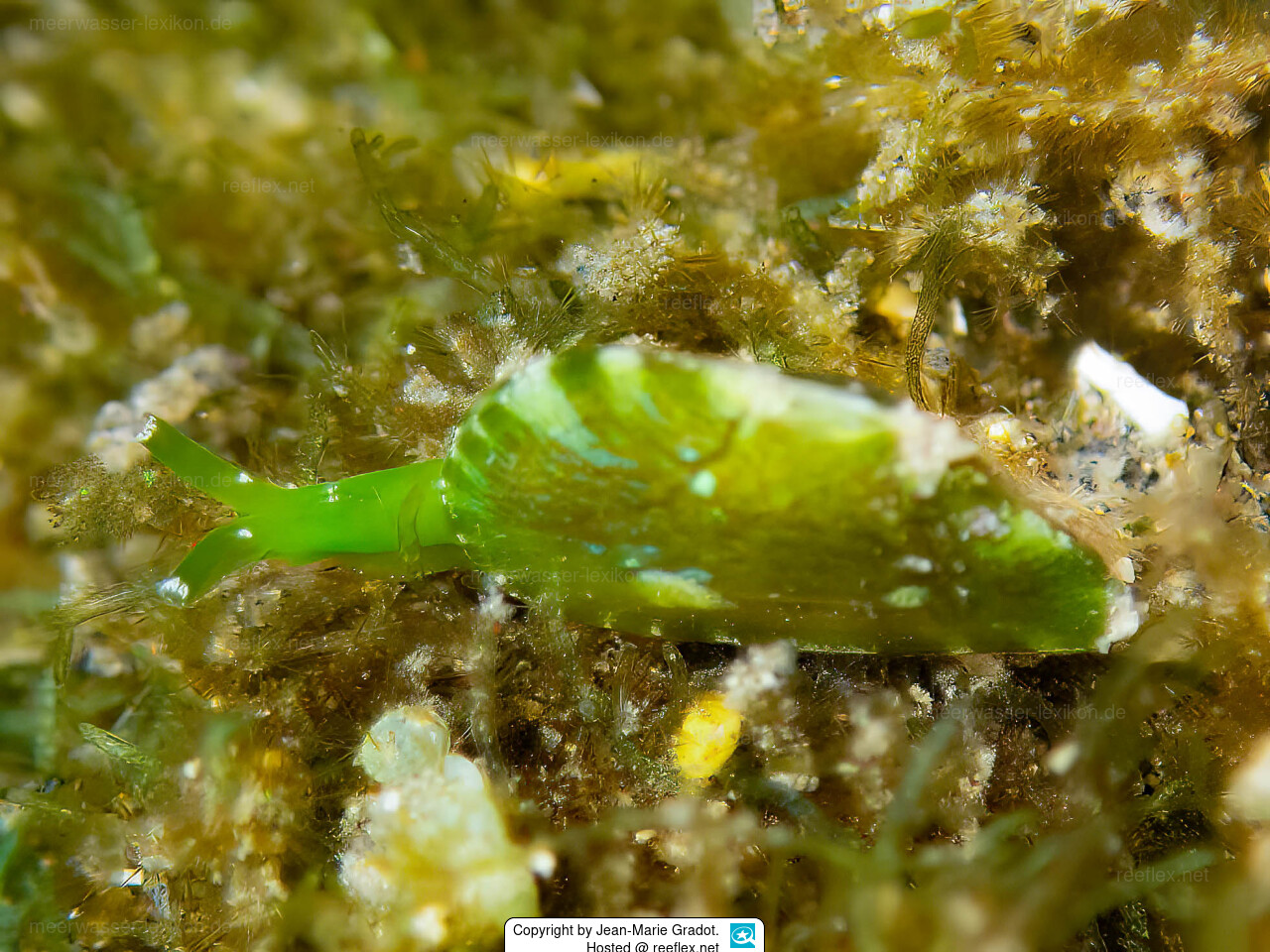Info
Divers and snorkelers can easily reach the water depth where this sea slug lives, but they have to look very closely to see the green sea slug that lives mainly on the equally green seaweed Caulerpa racemosa (Forsskål) J.Agardh, 1873 and eats it.
With a maximum size of one centimeter, underwater cameras with a good macro lens are used.
Berthelinia schlumbergeri is a sea snail from the family Juliidae, the two-shelled snails. These unique sea snails have two movable flaps like a scallop or clam, into which the animal can completely withdraw.
During metamorphosis, the left-wound veliger larva develops a kind of visor that initially forms a fold but eventually grows into two halves.
When creeping, the animal is twice as long as its shell, with much of this length accounted for by its long and slender neck.
However, the pointed tail does not extend beyond the rear end of the shell. Juliids are usually pale to dark green in color.
Next to the mouth are two rounded mouth lobes.
The rhinophores are ear-shaped, usually hollow cylindrical and connected at the base, with the eye spots immediately behind them on the throat.
The gills are not visible from the outside.
Sea snails of the Juliidae family feed on green algae of the genus Caulerpa and are well hidden in situ, so they can often only be observed when moving.
With a maximum size of one centimeter, underwater cameras with a good macro lens are used.
Berthelinia schlumbergeri is a sea snail from the family Juliidae, the two-shelled snails. These unique sea snails have two movable flaps like a scallop or clam, into which the animal can completely withdraw.
During metamorphosis, the left-wound veliger larva develops a kind of visor that initially forms a fold but eventually grows into two halves.
When creeping, the animal is twice as long as its shell, with much of this length accounted for by its long and slender neck.
However, the pointed tail does not extend beyond the rear end of the shell. Juliids are usually pale to dark green in color.
Next to the mouth are two rounded mouth lobes.
The rhinophores are ear-shaped, usually hollow cylindrical and connected at the base, with the eye spots immediately behind them on the throat.
The gills are not visible from the outside.
Sea snails of the Juliidae family feed on green algae of the genus Caulerpa and are well hidden in situ, so they can often only be observed when moving.







 Jean-Marie Gradot, La Reunion
Jean-Marie Gradot, La Reunion

